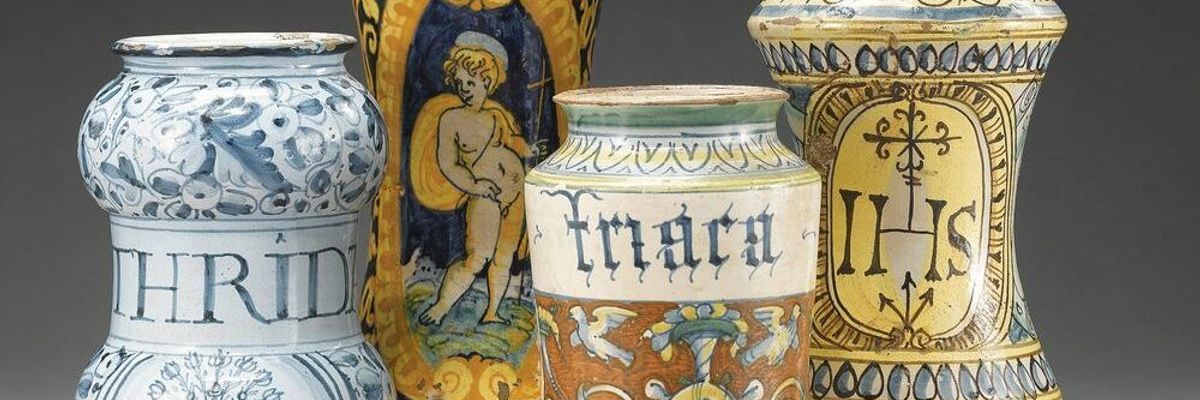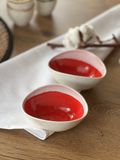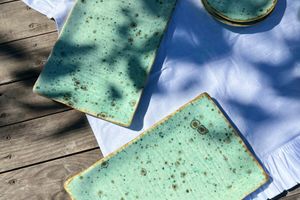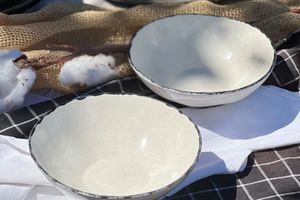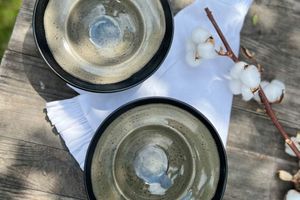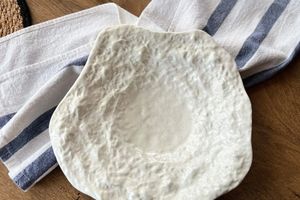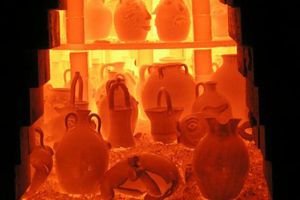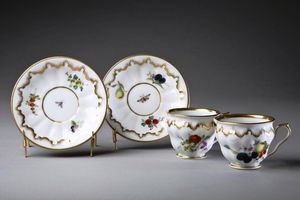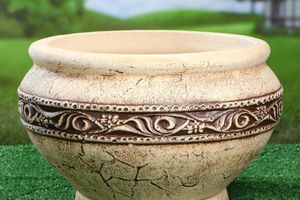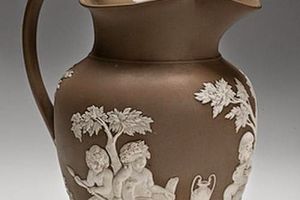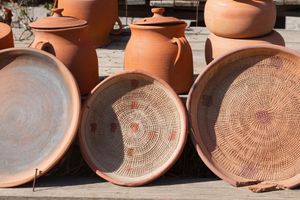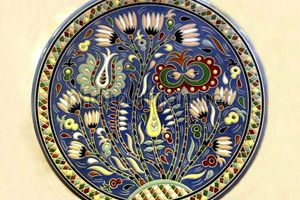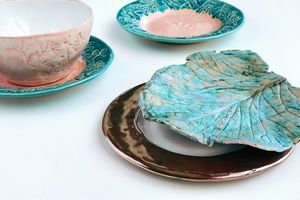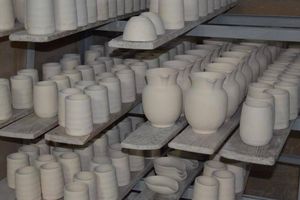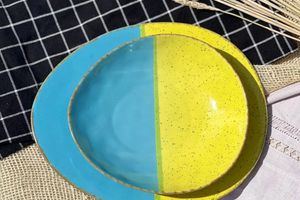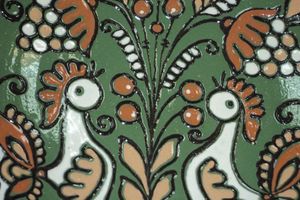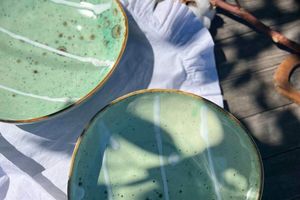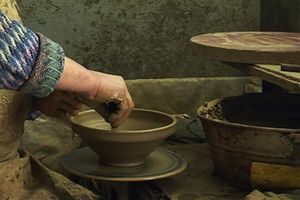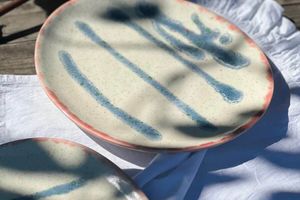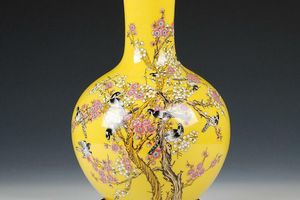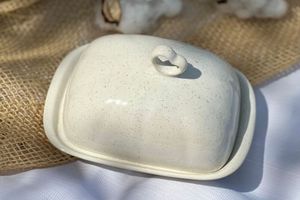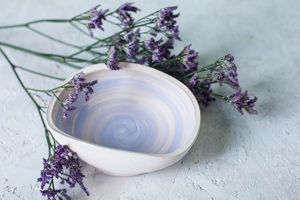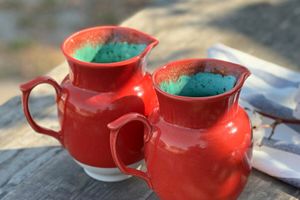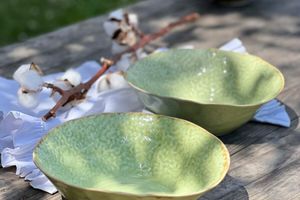Italian Majolica: Albarello – Symbol of Traditional Ceramics
Italian majolica is not just a type of ceramic art, but a true symbol of Italian culture. Among the many products created from majolica, a special place is occupied by the albarello - a traditional apothecary-jar, which has become a landmark element in the history of European ceramics. In this blog, we will look at what albarello is, its history, manufacturing technique and significance in the context of Italian majolica.
What is Albarello?
Albarello is a traditional Italian ceramic vessel used in pharmacies to store medicines, herbs and spices. Made of majolica, the albarello is usually cylindrical in shape with a slight flare in the middle and a narrow neck. These dishes were often decorated with bright ornaments, religious motifs or inscriptions indicating the contents.
Albarello served not only utilitarian purposes, but was also an object of art. The production of such jars reached its peak during the Renaissance, when Italian craftsmen created extremely refined and elaborately decorated products.
History of Albarello
Origins and Development
Albarello comes from the Arabic word "al-burālī" which means "flask". This type of tableware was borrowed by Europeans from the Middle East during the Crusades and trade, and later adapted by Italian craftsmen. In Italy, albarello gained popularity in the 14th and 15th centuries, especially in Tuscany, Emilia-Romagna and Venice.
Renaissance Bloom: During the Renaissance, albarello production reached its peak. Masters from various cities in Italy, such as Faenza, Deruta and Urbino, created products that became symbols of Italian art. These products were distinguished not only by the high quality of execution, but also by complex ornaments, which included religious scenes, figurative images and complex geometric patterns.
Production Centers
Each region of Italy had its own characteristics in the production of albarello, reflecting local traditions and influences. For example:
Faenza: This city became one of the most famous centers of majolica production. Albarellos from Faenza were distinguished by rich decoration and delicate paintings, often done in cobalt blue tones.
Deruta: Products from Deruta had distinctive bright colors such as yellow, green and orange. These albarellos were often decorated with scenes from the Bible or mythology.
Urbino: In Urbino, craftsmen created albarello with detailed relief decoration and complex friezes that covered the entire surface of the vessel.
Albarello Manufacturing Technique
Formation
Albarellos were made from white clay, which, after forming, was first fired at a low temperature. The albarello shape – cylindrical with a smooth expansion in the middle – was created on a potter's wheel. This design was not only aesthetically attractive, but also functional: it allowed you to comfortably hold the dishes in your hand and remove the lid without too much effort.
Glazing and Painting
After the first firing, the albarello was covered with an opaque white glaze, which created an ideal surface for further painting. The painting was done with mineral pigments, which acquired bright and stable colors after firing. The most popular colors were blue, yellow, green and brown.
Decorative elements: Masters often used elaborate ornaments, including leaves, flowers, garlands, as well as scenes from the Bible, mythology or everyday life. Inscriptions on albarello usually indicated the contents - they could be the names of medicines or herbs stored in the vessel.
Burning
After painting, the albarello was subjected to a second firing at a temperature of about 900 °C. This fixed the glaze and pigments, making the product strong and durable.
Significance of Albarello in Culture and Art
Albarello became not just an apothecary's ware, but a symbol of the Italian art of majolica. They reflect the high level of craftsmanship, aesthetics and attention to detail that were characteristic of the Renaissance. Albarellos were often displayed in pharmacies and homes, demonstrating the status and wealth of the owner.
Collecting: In the 18th and 19th centuries, albarello became an object of collection among the aristocracy and wealthy townspeople. They were valued not only for their functionality, but also for their artistic value.
Influence on Contemporary Art: Albarello continues to inspire contemporary artists and ceramicists. They use traditional techniques and motifs to create modern interpretations of this classic type of tableware, while preserving its historical heritage.
Conclusion
Albarello is more than just an apothecary's ware. It is the embodiment of the Italian art of majolica, which combines functionality, beauty and craftsmanship. Their production required not only technical perfection, but also an artistic sense, which allowed to create unique products that remain a symbol of Italian culture and art to this day.

